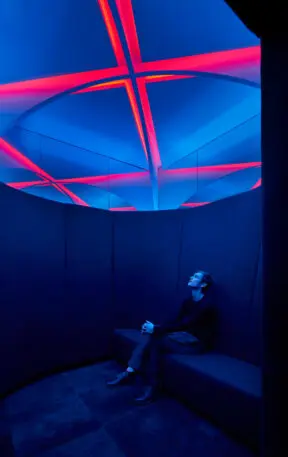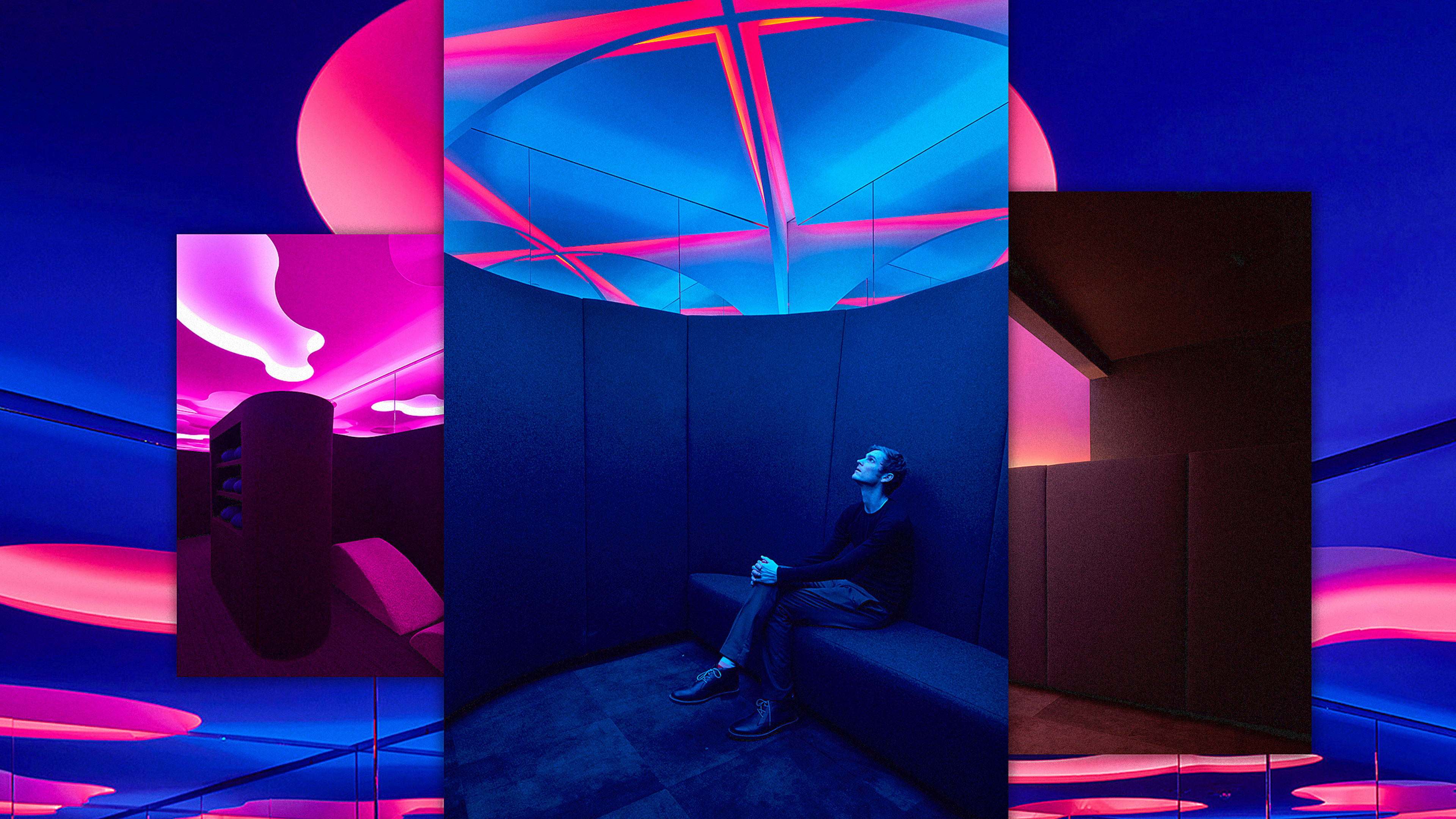The noise, the distraction, the endless email, and the incessant pinging of the chatroom combine to make the office experience feel like an inescapable onslaught. Throw in a pandemic that spreads most easily through the air in enclosed spaces and the modern workplace can feel more like a stress factory on overdrive.
As companies venture toward reopening offices and returning to in-person work, the stresses of the office are unlikely to go away. To counteract their impact on worker productivity—and overall human well-being—Google has worked with the architecture collective Office of Things to augment its office buildings with a series of serene enclosed environments that offer a way to escape.



The project first began in 2017. “Our goal with them is to really create a physical space so you can mentally or emotionally escape, reset, step away from your surroundings,” says Lane Rick, principal at Office of Things, which has designed about five different iterations in what it calls its Immersive Spaces Series. Each has a unique ceiling and lighting treatment, and can be set by users to play in a timed sequence. They range from a dome that seems to disappear into the distance to a mirrored sky accented with amoeba shapes to a geometrical roof-like shape that peaks with a small slit of color.
[Image: Office Of Things]She says the intention of the design was to create a simple space that could be used by anyone, whether as part of a dedicated meditation practice or just a place to give the mind a break for a few minutes. “Even if you don’t have the interest in downloading a [meditation] app, if you have no expectations, you don’t like to meditate, you don’t know what yoga is, you don’t know what anything is, but you just know that you want a moment to yourself. The goal is that you can use these rooms even without instructions,” Rick says.
In the rooms, users can select from a few light and sound sequences that run for different amounts of time. Rick says they’re intended to create a setting for relaxation and clearing of the mind, but don’t have to be used in any prescribed way. Some people run through the sequences over and over; others come in just to sit in the quiet for a few minutes.
They are a significant step up from the spaces of solitude Google had tried to create before. “Our meditation spaces were really just a conference room minus the furniture and some pillows,” Trinidade says. People would use them to meditate, to pray, to stretch, but the experience was less than soothing. “It was just kind of a whatever room. It wasn’t really a designed space.”
It also wasn’t the most private space. A crude signage system was created to indicate when the room was being used, but people often forgot to turn it around after they left. “The learned behavior was that the sign was never right,” Trinidade says. “So what happened is people would just barge in and there’d be someone meditating or praying.”
The new chambers have been well received, he says, but for privacy reasons the company hasn’t collected any data or metrics on their use. The one thing they have noticed, though, is the trade-off of physical office space for actual work. “Because of it, there’s one less meeting room in our buildings, and meeting rooms are in super high demand,” Trinidade says. “So it’s a scarce resource, but culturally we think that this is important to have.”
He expects the spaces to become even more important as more workers return to the office. “I don’t want to quantify it in any productivity ways, I just think that human well-being is important as an end goal in and of itself. Pre-COVID, that was super important. Post-COVID, it will be a reason why people come to the office,” he says. “Having things to offset the constant demands of performing when you do come to the office will be even more heightened.”
Recognize your brand’s excellence by applying to this year’s Brands That Matter Awards before the early-rate deadline, May 3.














